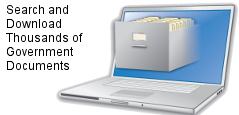FAA-H-8083-3A, AIRPLANE FLYING HANDBOOK (2004)
FAA-H-8083-3A, AIRPLANE FLYING HANDBOOK (2004)., The Airplane Flying Handbook is designed as a technical manual to introduce basic pilot skills and knowledge that
are essential for piloting airplanes. It provides information on transition to other airplanes and the operation of
various airplane systems. It is developed by the Flight Standards Service, Airman Testing Standards Branch, in
cooperation with various aviation educators and industry.
This handbook is developed to assist student pilots learning to fly airplanes. It is also beneficial to pilots who wish
to improve their flying proficiency and aeronautical knowledge, those pilots preparing for additional certificates or
ratings, and flight instructors engaged in the instruction of both student and certificated pilots. It introduces the future
pilot to the realm of flight and provides information and guidance in the performance of procedures and maneuvers
required for pilot certification. Topics such as navigation and communication, meteorology, use of flight information
publications, regulations, and aeronautical decision making are available in other Federal Aviation Administration
(FAA) publications.
This handbook conforms to pilot training and certification concepts established by the FAA. There are different ways
of teaching, as well as performing flight procedures and maneuvers, and many variations in the explanations of
aerodynamic theories and principles. This handbook adopts a selective method and concept of flying airplanes. The
discussion and explanations reflect the most commonly used practices and principles. Occasionally the word �must�
or similar language is used where the desired action is deemed critical. The use of such language is not intended to
add to, interpret, or relieve a duty imposed by Title 14 of the Code of Federal Regulations (14 CFR).
It is essential for persons using this handbook to also become familiar with and apply the pertinent parts of 14 CFR
and the Aeronautical Information Manual (AIM). The AIM is available online at http://www.faa.gov/atpubs.
Performance standards for demonstrating competence required for pilot certification are prescribed in the appropriate
airplane practical test standard.
The current Flight Standards Service airman training and testing material and subject matter knowledge codes for all
airman certificates and ratings can be obtained from the Flight Standards Service Web site at http://av-info.faa.gov.
The FAA greatly acknowledges the valuable assistance provided by many individuals and organizations throughout
the aviation community whose expertise contributed to the preparation of this handbook.
This handbook supersedes FAA-H-8083-3, Airplane Flying Handbook, dated 1999. This handbook also supersedes
AC 61-9B, Pilot Transition Courses for Complex Single-Engine and Light Twin-Engine Airplanes, dated 1974; and
related portions of AC 61-10A, Private and Commercial Pilots Refresher Courses, dated 1972. This revision expands
all technical subject areas from the previous edition, FAA-H-8083-3. It also incorporates new areas of safety concerns
and technical information not previously covered. The chapters covering transition to seaplanes and skiplanes
have been removed. They will be incorporated into a new handbook (under development), FAA-H-8083-23,
Seaplane, Skiplane and Float/Ski Equipped Helicopter Operations Handbook.
This handbook is available for download from the Flight Standards Service Web site at http://av-info.faa.gov. This
web site also provides information about availablity of printed copies.
This handbook is published by the U.S. Department of Transportation, Federal Aviation Administration, Airman
Testing Standards Branch, AFS-630, P.O. Box 25082, Oklahoma City, OK 73125. Comments regarding this handbook
should be sent in e-mail form to AFS630comments@faa.gov.
FAA-H-8083-3 Rev. A
|
Simple Search
 | ||||||||||||
